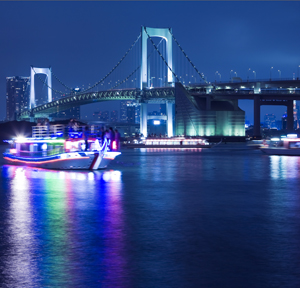Client Affairs
The Art Of Bluff: Trump’s Tariff Tactics In US-Japan Trade Deal

The author argues that US President Donald Trump’s tariff threats against Japan were largely a calculated bluff designed to showcase US power without causing major economic disruption.
Peter Tasker, co-founder and strategist at fund manager Arcus Investment looks at how the trade deal between the US and Japan left lingering distrust in Japan, but the enduring strategic alliance between the two countries remains essential amid rising Chinese influence. The editors are pleased to share these insights; the usual editorial disclaimers apply to views of guest writers. To comment, email tom.burroughes@wealthbriefing.com and amanda.cheesley@clearviewpublishing.com.
If an aggressor threatens to give you a beating and then lets you off with a single punch in the nose, how would you feel? Relieved, of course, but nervous. After all, if he has changed his mind once, he might do it again. On the other hand, if you have some experience of his modus operandi, you might ask yourself why he acted as he did and what he wanted to achieve.
We believe that US President Donald Trump wanted to demonstrate his and America’s power but without causing serious financial and economic disruption. In other words, there would be a significant amount of bluffology.
On 2 April, he shocked the world by kicking off a trade war via sky-high tariffs. Japan was particularly shocked because it had assumed that its status as America’s number one military ally in the crucial Indo-Pacific region would guarantee preferential treatment. Instead, it got the cold shoulder, with negotiator and Economic Revitalization Minister, Ryosei Akazawa travelling to Washington eight times in four months. On the final occasion, he was dismissed with a mere phone call.
If it seemed to many that Trump was playing games during these negotiations, the answer was yes. Akazawa-san might just as well have stayed at home. The “largest deal ever made” that Trump proposed and Japan accepted is very similar to the one agreed by the EU and the US a few days later, one dubbed by the American President as “the greatest deal of all time.”
Rather like the professional wrestling matches that Trump enjoys and has invested in, this suggests that the whole tariff drama had been mapped out from the start. Likewise, Team Trump could well have settled on 15 per cent tariffs in advance as “doable” for major companies in Japan and the EU. However, the series of delays and deadlines would have been there to ratchet up the tension and give the targets a false sense of accomplishment.
Trump is taking calculated risks – that Wall Street holds up, that US employment remains in decent shape, that his support base is loyal, and that inflation does not take off. The lower tariffs reduce these problems. So far, everything is going his way. As for the $550 billion laundry list of requirements that Trump claims are conditional on Japan’s deal, despite threatening to do so, it is highly unlikely that he will monitor complicated details himself. Akazawa’s take is that only 1 to 2 per cent of the total sum will be channelled into Japanese investment. In all probability, the tariff story is now over for Japan.
Left hanging in the air is the residue of distrust amongst ordinary Japanese citizens and decision-makers alike. But the cold fact is that in geopolitical terms, Japan has nowhere else to go. It has successfully kept outside the Sinosphere for 1,500 years but cannot maintain its cultural and strategic independence without its alliance with America. That alliance may be existential for Japan, but it is also pretty important for the US. Given Chinese ambitions, the US would find it difficult to remain a major player in East Asia without a well-armed and actively engaged Japan. Compared with these slow-changing realities, Donald Trump’s four-month smackdown is a blink in the eye.